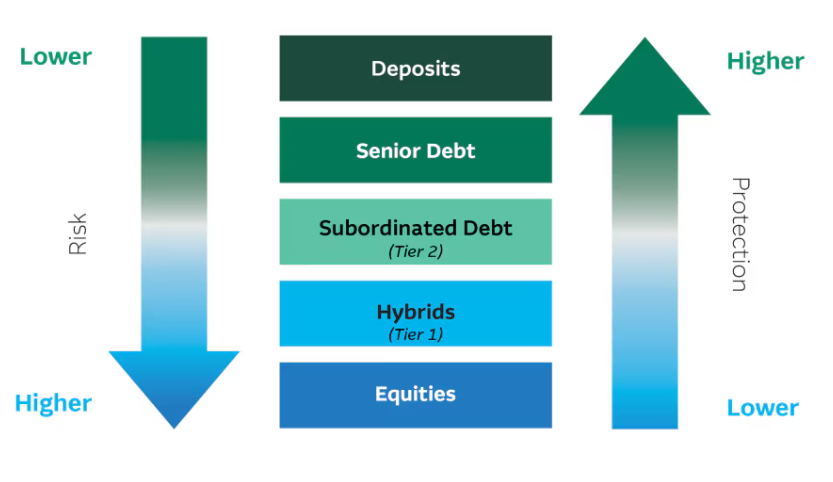The end of bank hybrids, the future of fixed income investing
Please note this interview was filmed on 11 March 2025.
Australia’s love affair with bank income is nothing new. From franked dividends to hybrid securities, income-focused investors have long turned to the big banks for yield. But change is coming.
With the banking regulator's plan to phase out bank hybrids by 2032 — and no new issuances expected in the interim — a significant pillar of income portfolios is gradually being dismantled.
At the same time, higher interest rates have reopened opportunities across global bond markets. Yet many investors remain under-allocated to fixed income, unsure how to access it or which risks are worth taking.
So, in this new environment, how should investors think about generating income that is both attractive and sustainable?
To answer this, we sat down with Brett Lewthwaite, Chief Investment Officer and Global Head of Fixed Income at Macquarie Asset Management, who has spent more than two decades navigating credit markets.
In this interview, Lewthwaite shares his perspective on the macro shift taking place, what’s changed in terms of access and risk, and why he believes the current moment presents a compelling income opportunity — even for investors who’ve historically preferred equities and hybrids.
The rise (and decline) of bank hybrids
The ~$40 billion bank hybrid market has long filled a sweet spot for income investors — offering attractive yields, franking credits, and lower volatility than bank shares, thanks to their hybrid nature combining features of both fixed income and equity.
However, as Lewthwaite points out, their popularity has also been driven by the historical difficulty of accessing fixed-income markets directly.
“Accessing bonds directly has typically required large parcel sizes … sometimes as much as $500,000. So when investors looked for alternatives, they turned to bank hybrid securities, which could be accessed easily on the ASX,” he says.
Hybrids were also valuable to banks, as they helped meet capital requirements set by the Australian Prudential Regulation Authority (APRA). However, as APRA’s thinking has evolved on how best to safeguard the financial system in a crisis, the regulator has directed banks to phase out these instruments entirely.
Rethinking income

Still, hybrids are only part of the story.
The fixed income market has undergone a major transformation, driven by the growth of exchange-traded funds (ETFs). These vehicles have made what were once cost-prohibitive bond exposures accessible in neat, tradable parcels for everyday investors on the ASX — whether they’re looking to replace hybrids or explore targeted opportunities in bond markets.
Today, fixed income ETFs manage $35 billion in assets, up 29% from the year prior, according to data from the ASX.
“Access has improved enormously thanks to ETFs and active ETFs. Investors can now get high-quality bond exposure on the ASX in the same way they’d buy a share," Lewthwaite says.
He adds that the substantial rise in interest rates since their pandemic-era lows has restored fixed income as a viable option for investors seeking yield and stability - without taking on equity-like risk.
Why quality matters now
Against the backdrop of disappearing hybrids, the need for sustainable cash flows and interest rates where they are now, where can conservative investors go?
One area gaining attention is subordinated debt — a type of fixed income security issued by banks and insurers.
“It’s a potential substitute for investors looking to replace the income from hybrids, albeit in a higher-quality part of the spectrum,” Lewthwaite says.
Also known as Tier 2 capital, subordinated debt securities rank below senior debt in terms of repayment priority in the event of a company’s insolvency, as shown in the visual below. However, they take priority over hybrid securities and equities when it comes to claiming cash flows and assets in a default scenario.

While subordinated debt is considered a liquid investment, it has historically been harder to access for most investors outside of the institutional market. That’s now changing. Investors can gain easier exposure to these securities via ETFs.
For investors with holdings in cash, term deposits, or senior bonds who are willing to take on a bit more credit risk, subordinated debt issued by well-known and well-capitalised Australian financial institutions can offer access to higher-yielding opportunities.
Conversely, for investors currently holding high-yielding hybrids or bank shares who are looking to reduce credit risk, subordinated debt can play a more defensive role in a diversified income portfolio — offering a middle ground between return and risk, and at yields higher than cash.
Macquarie recently launched the Macquarie Subordinated Debt Active ETF (ASX: MQSD), which provides diversified exposure to this part of the market.
While subordinated debt doesn’t offer franking credits, active management can help bridge the yield gap and make it competitive with what investors are used to getting from hybrids.
Lewthwaite says by targeting market inefficiencies and distortions — and by accessing new issues in the primary market rather than buying on the secondary market — managers may be able to enhance returns and secure more attractive allocations than individual investors.
“The combination of far more access and active management should ultimately lead to similar returns to what you're already getting in hybrids — with most likely less volatility than you've seen in some of the hybrids over the years,” he says.
Introducing new Macquarie fixed income active ETFs
To address the needs of investors, the Macquarie Fixed Income team have added to their growing suite of ASX-traded solutions. Fixed income active ETFs can offer attractive alternatives to hybrid securities, ensuring investors can maintain their defensive exposure with confidence.
2 topics
1 stock mentioned
1 fund mentioned


